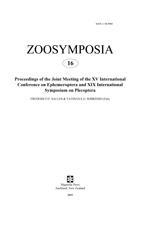Abstract
For the last 93 years mayfly diversity has been studied at all taxonomic levels from families to populations and all spatial and temporal scales. This has resulted in the description of almost every possible pattern with regard to latitude, elevation, habitat, climate, and season. However, if the focus is on species and sampling restricted to nymphs and the spatial scale limited to drainage networks, then a single recurring pattern appears—the hump-shaped Mid-network Mayfly Maxima (MMM). Past studies have attempted to explain this hump-shaped pattern with regards to some combination of ecologic, hydrologic, climatic, anthropogenic, or historic variables. There is wide agreement that some of these variables are important to the occurrence and distribution of individual species, but there is no consensus as to what combination of these variables comprises the best general explanation of the humped-shaped pattern. Because of the lack of agreement on how to explain this recurring pattern for mayflies and an unwillingness to acknowledge it as a general feature of drainage networks, where mayflies occur, we have become stuck trying to tease out a cause and have failed to recognize that although knowing a cause is important it may not be relevant to the broader use of this information for biomonitoring, climate monitoring, habitat management, and conservation now. I believe that there is sufficient evidence that the MMM exists and occurs in almost every major drainage system and is reasonably predictable using basic attributes of drainage networks pertinent to the aquatic life stage (nymphs). Herein I will summarize pertinent studies that support this contention; reexamine some results from one of the most comprehensive recent studies that included mayfly taxa along altitudinal gradients in North America by Gill et al. (2014), as well as a test dataset from a river in western Maine, USA; comment on information needed to estimate the location of MMM in any drainage network and how the MMM can be used; and discuss how the extent of common vs. rare species affect the perceptions of the regional species pool and the MMM.

